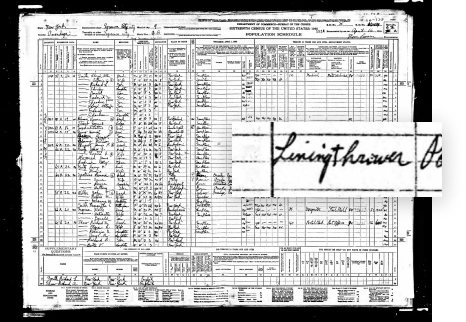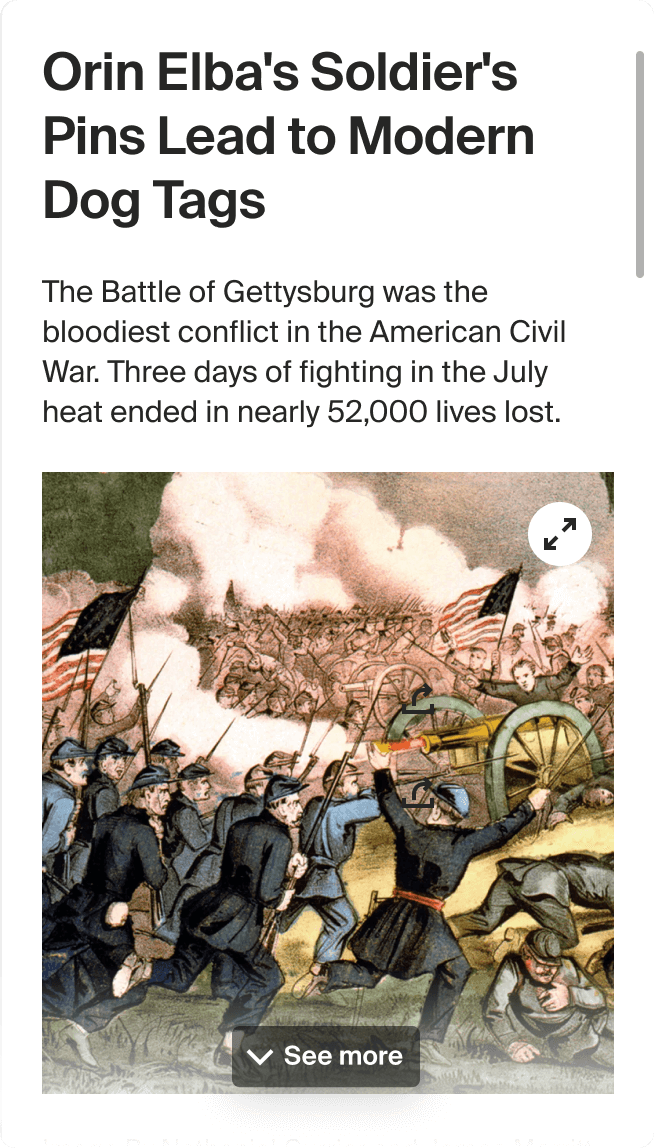Ancestry’s StoryScout: Low effort for meaningful discoveries – family history experience
I was tasked with creating an experience for new users to family history, enabling them to uncover their ancestors’ stories and access valuable information in a low-effort way. Throughout the project, I led the UX and visual design for StoryScout, contributing to design strategy and all creative aspects.
The impact we made
+1.5%
increase in family history subscriptions, totaling +7K GSAs in the US. +2% increase in subscriptions in the UK, totaling +3K GSAs.
+5.6%
increase in paid subscriptions with DNA Story/StoryScout integration
100+
stories created to help users make meaningful discoveries
16%
shared a story with friends or family
Project
StoryScout
Team
Product Managers
UX Researcher
Content Writers
Engineers in Lviv, SF, & Lehi
Lead UX/Visual Designer (me)
UX/Design Strategist
My Role
User experience
Visual design
Design strategy
Prototyping & testing
Usability study
Optimization
Time
2020
Project
StoryScout
Team
Product Managers – UX Researcher – Content Writers – Engineers in Lviv, SF, & Lehi – UX/Design Strategist – Lead UX/Visual Designer (me)
My Role
User experience – Visual design – Design strategy – Prototyping & testing – Usability study – Optimization
Time
2020
Overview
Ancestry–The World’s Largest Genealogy Site
What is Ancestry’s StoryScout?
- StoryScout makes it easy for new users to get started with family history.
- StoryScout utilizes machine learning to identify significant events, milestones, photos, and stories from historical records and presents them in a story format.
- Users can explore their ancestors’ experiences, understand their way of life, and trace how their journey shaped their own.
- Ultimately, StoryScout aims to increase user acquisition and convert newcomers into family history subscribers.
StoryScout strategy:
1
Low effort to get started
quickly access valuable information and personalized insights about their family.
2
Make meaningful connections
explore their ancestors’ experiences, understand their way of life, and trace how their journey shaped their own.
3
Upsell into current subscriptions
convert new users into family history subscribers.
Audience
StoryScout targets the “Family History Curious” audience
Based on prior research, the Family History Curious segment is:
- Curious about their family history, but unwilling or unable to invest the time and energy into research. Don’t expect to have to do research.
- Expect to put in a bit of information about them and their family and then get their family tree
- Driven by self-identity – how they fit into the bigger picture (family/history)
- Interested in family stories, who they come from, and history (when it is relevant to them). Not researchers, but viewing historical documents brings authenticity and an emotional punch.
- Younger (25-54), more mobile-centric and tackle things in bite-sized sessions
- ~35M potential segment size in the US.

Problem
Getting started on Ancestry is still really difficult for new users
1. Building a family tree is time-consuming
Ancestry’s core experience revolves around building a family tree, using user-provided data to search millions of records and suggest historical record hints, photos, and other family trees.
However, creating a family tree requires recalling information and manually entering details into Ancestry’s platform. This can lead to users quickly hitting roadblocks.

Completing a tree up to their grandparents (15 members) exposes users to 144 fields, which can be overwhelming.
75%
Our research shows 75% of new users do not create a family tree. (2020)
2. Record search can be challenging and overwhelming for new user

Census and Voter Lists search experience contain up to 20 options.
The Challenge
I was tasked with designing the StoryScout system
Onboarding flow
make it easy for new users to get started.
Ancestors’ Stories Page
to explore their ancestors’ stories and easily share with friends or family.
My Family Stories Page
for easy access to all family stories.
I collaborated closely with our Product Manager to understand project goals and maintained regular communication with developers to ensure alignment and technical constraints.
We also partnered with Content Writers to craft curated stories and utilized Data Science for valuable data insights.
Design Solutions
Reduce friction with a guided, step-by-step onboarding to the family history experience
Rather than doing numerous record searches on your own, StoryScout leverages machine learning and does all the work for you with minimal effort.
We tested multiple search form and found that asking for a grandparent’s name and a place they lived resulted in a high completion rate to get started.
Below is the onboarding experience that I designed:

StoryScout onboarding flow

“You never think these records exist, but the fact that I didn’t have to really search for them, they’ve been compiled, it’s easy access. I didn’t have to dig through a ton of records, I didn’t have to scour the internet. Literally it’s just here for me. I like that aspect of it.”
—TG
Design Solutions
I designed the Ancestors’ Stories page
To simplify historical records, I transform facts into narrative stories, eliminating the need to navigate varied formatting and making them easier to read. I believe storytelling is crucial for helping users make meaningful discoveries by:
- Connect with experiences on a deeper level
- Stories were in a small, snackable format for easier recall, especially for longer narratives.
- Adding historical context, maps, records, and data insights enhances the experience and helps users understand their ancestors’ lives, challenges, and triumphs.

Reading historical records can be challenging because they are often handwritten and difficult to decipher.
I created story components and templates for scalability
Here are the story components:
Story components
Types of Ancestor story templates

Stories were in a small, snackable format for easier recall, especially for longer narratives (desktop view).
Design Solutions
I designed the ‘My Family Stories’ page

Usability Study
The 4-week diary study reviews what’s working and what’s not
After launching StoryScout, we wanted to gather user feedback on the product. I teamed up with two other designers to conduct a 4-week diary study.
The research goals were to:
- Uncover first impressions of StoryScout.
- Understand how users consume and value stories.
- Discover how stories resonate over time.
- Determine if StoryScout prepares users for family history.
What we’ve learned
Where StoryScout excel
StoryScout makes a great first impression.
StoryScout requires low effort for users to quickly achieve valuable info about their family.
Opportunities for improvements
Where StoryScout failed
Users have an “in awe” moment during their first session, but it wears off quickly.
When reading stories, users get confused about the definition of keywords.
Stories became repetitive.
Using historical images to tell the story sometimes led users to believe it was their family, causing frustration.
“Family History Curious” audience journey map

StoryScout as an effective Marketing tool
After design and development, StoryScout grew…
StoryScout has successfully converted new users, registrants, and DNA users into family history subscribers, exceeding our Go-To-Market goals and outperforming other experiences in conversion rates.
Impact
+6%
increase in conversion, surpassing the 2019 average of 1% (Women Suffrage campaign).
+2,400
sign-ups in 5 days for ‘Open Access’ Holiday/Turkey Marketing campaign (Women Suffrage campaign).
6
funnel-like story campaigns launched using the StoryScout approach
Marketing campaigns utilizing StoryScout

Women Suffrage campaign: Stories and milestones from the fight for women’s voting equality.

World War II campaign: Untold stories of the men and women who faced World War II with dignity and courage.
StoryScout and DNA cross-sell
Impact
+9.4%
increase in free-trial rates with DNA Story/StoryScout integration
+5.6%
increase in paid subscriptions with DNA Story/StoryScout integration
Summary
Reflections & learnings
- As a team, we successfully launched a product to spark excitement and curiosity among new users about their family history with minimal effort.
- StoryScout helped users discover ancestors they might have missed on their own.
- StoryScout provides personalized stories for users to explore their ancestors’ experiences, understand their way of life, and trace how their journey shaped their own.
- Users can easily share their ancestors’ stories with friends or family.
While StoryScout makes a good first impression, the excitement wears off quickly over time. Inaccuracies in some stories result from human errors during digitization or indexing, leading users to distrust the product. Using historical images to tell the story sometimes led users to believe it was their family, causing frustration. It was crucial for us to clarify that these were stock photos, not their actual family. This indicates that more work needs to be done.
Next steps…
Future product development goals I’d like to tackle:
- How might we educate users about Ancestry values while going through StoryScout experience
- How might we let users create their own stories (Users’ generated stories)
- How might we use StoryScout to lead towards having an Ancestry tree experience
- How might we design an experience that prevents repetitive stories while highlighting commonalities?
- How might we create a family view that maintains anticipation?
- How might we create an experience that helps educate users on common family history tools?
In 2022, I was asked to support other work streams so future development was put on hold.












